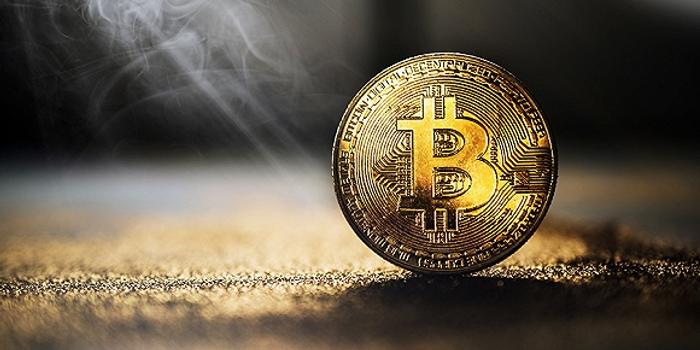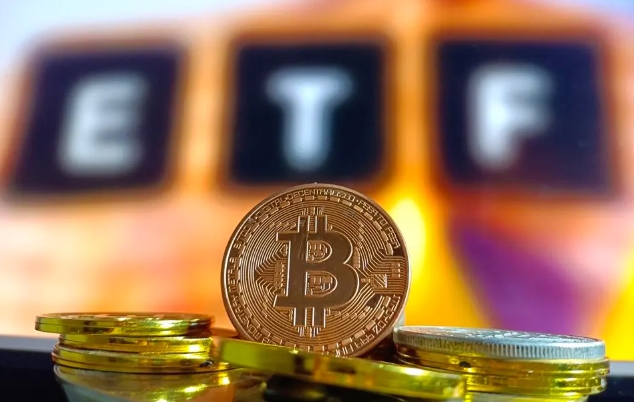 |
|
 |
|
 |
|
 |
|
 |
|
 |
|
 |
|
 |
|
 |
|
 |
|
 |
|
 |
|
 |
|
 |
|
 |
|
Cryptocurrency News Articles
Bitcoin ETF demand slows but still sees net inflows, will the bull market continue until capital outflows?
Feb 20, 2025 at 03:23 pm
CryptoQuant CEO Ki Young Ju said Bitcoin ETF demand slowed down and still had net inflows, and the bull market continued until capital outflows, and supply and demand were key to the market.

Amid the turmoil of the cryptocurrency market, Bitcoin ETFs (Bitcoin Trading Open-end Index Funds) have always been the focus of investors. On February 20, CryptoQuant CEO Ki Young Ju once again focused the market's attention on the flow of funds in Bitcoin ETFs and its correlation with the bull and bear market cycle.
Bitcoin ETF demand slows but still net inflow
Recently, although demand for Bitcoin ETFs has slowed down, it still maintains a net inflow. There are complex causes behind this phenomenon. From the perspective of market heat, news such as the approval of Bitcoin ETF in the early stage has aroused high market attention and a large influx of funds, causing demand to be overstimulated in the short term.
As time goes by, the initial fanaticism gradually cools down, demand naturally slows down to a certain extent. But on the other hand, there are still many investors who are optimistic about the long-term value of Bitcoin and believe that it has a unique position in asset allocation, which supports the continued flow of funds into Bitcoin ETFs.
From an investor structure analysis, the behavioral differences between institutional investors and retail investors also have an impact on demand. Institutional investors are often relatively cautious but firm in their investment decisions on Bitcoin ETFs based on longer-term strategic planning and in-depth research and analysis.
Even in the slowdown in demand, some institutions that are optimistic about Bitcoin in the long term are still steadily increasing their positions. Retail investors are more susceptible to market sentiment fluctuations and actively follow the trend when the market was hot in the early stage. After demand slowed down, their enthusiasm for buying also decreased significantly.
The relationship between bull market and ETF capital outflow
Ki Young Ju pointed out that the current bull market cycle will continue until there is a clear outflow of ETF funds, and the continued net outflow demand will herald the beginning of the bear market cycle. Judging from historical data and market laws, capital flow plays an important indicator of market trends.
In the previous bull market, the continuous inflow of funds drove asset prices to rise continuously, forming a virtuous cycle. When a large amount of funds begin to withdraw, it is like taking away the cornerstone that supports the bull market. Prices often fall sharply, which in turn triggers market panic and accelerates the arrival of a bear market.
Taking the stock market as an example, at the end of the bull market of some traditional financial assets, it is often accompanied by the gradual outflow of funds. Investors' expectations for future returns of assets have decreased, and they have sold their assets one after another, resulting in an imbalance in the market supply and demand relationship and a decline in prices. Although the cryptocurrency market is unique, it is essentially similar to traditional financial markets in terms of capital drive.
As an important funding channel in the Bitcoin market, Bitcoin ETF directly reflects the confidence and expectations of market investors in this asset. When ETF funds continue to inflow net, it means that there are strong buyers in the market, driving the price of Bitcoin to rise and the bull market continues. Once capital outflow occurs, it means that sellers' strength is gradually gaining the upper hand, the market supply and demand relationship will reverse, and the bull market will be in danger.
Supply and demand are the core of the market
Ki Young Ju stressed that what is really important in the market is supply and demand, and other factors are just market noise. In the Bitcoin market, supply is mainly determined by the mining mechanism of Bitcoin.
The total amount of Bitcoin is limited to 21 million. As mining difficulty increases, the output speed of new Bitcoins is gradually slowing down. This relatively fixed supply model makes demand a key factor affecting prices.
When demand for Bitcoin ETFs is strong, a large amount of funds poured in, driving the price of Bitcoin to rise. Because the operating mechanism of ETFs is to create share by purchasing Bitcoin, the increase in demand directly leads to an increase in the market's demand for Bitcoin purchases.
From the perspective of demand, in addition to investors' pursuit of asset appreciation, factors such as macroeconomic environment, policies and regulations will also indirectly affect the demand for Bitcoin.
For example, in a period of global economic instability, in order to maintain assets, investors will allocate some of their funds to assets such as Bitcoin that have hedging attributes, thereby increasing the demand for Bitcoin. Changes in policies and regulations, such as regulatory attitudes on cryptocurrency transactions, will also affect investor confidence and participation, and thus affect demand.
But no matter how these factors change, they ultimately play a role by affecting the supply and demand of the market. When judging market trends, only by grasping the core factors of supply and demand can we more accurately grasp market trends.
Market noise disrupts investors
Although supply and demand are the core of the market, there are a large number of noise factors in the market that interfere with investors' judgments. For example, various messages and opinions on social media, some unfounded rumors and false information can spread widely in a short period of time, triggering panic or excessive optimism among investors.
Some so-called "experts" predictions often lack scientific basis, but can cause a stir in the market. There are also various technical analysis indicators in the market, although they have certain reference value, if investors rely too much, they can easily fall into misunderstandings.
Investors need to be rational and calm when facing these market noises. On the one hand, we must improve our understanding of the market through in-depth research and learning, and not be confused by superficial information.
On the other hand, we should pay attention to the fundamentals of the market, that is, changes in supply and demand, and use this as the main basis for investment decisions. At the same time, investors can also use diversified investment portfolios to reduce the risks brought by market noise, avoid concentrating all funds on Bitcoin or Bitcoin ETFs, and diversify investments in different asset classes to deal with market uncertainty.
Disclaimer:info@kdj.com
The information provided is not trading advice. kdj.com does not assume any responsibility for any investments made based on the information provided in this article. Cryptocurrencies are highly volatile and it is highly recommended that you invest with caution after thorough research!
If you believe that the content used on this website infringes your copyright, please contact us immediately (info@kdj.com) and we will delete it promptly.
-

- Bybit was stolen for 1.5 billion. Where is the security of the cryptocurrency industry going?
- Feb 22, 2025 at 01:45 pm
- Bybit's monumental $1.5 billion hack has dealt a devastating blow to cryptocurrency security, eroding trust in digital assets and raising concerns about industry-wide inadequacies in regulatory oversight and security measures.
-

- After the Pascal hard fork, there are Lorentz and Maxwell upgrades. What are the differences between them?
- Feb 21, 2025 at 05:25 pm
- In 2025, BNB Chain will carry out Pascal hard fork and Lorentz and Maxwell upgrades, which will have differences in performance and security, and will have a wide impact.
-

- When will the BNB Smart Chain Pascal hard fork upgrade start? Is the mainnet and testnet time the same?
- Feb 21, 2025 at 05:16 pm
- BNB Smart Chain will be upgraded on February 25, the main network will be upgraded in mid-March, and there will be subsequent upgrades in April and June, bringing various functions improvements.
-

- The 21-day public comment period has been triggered. When will the XRP ETF actually be launched?
- Feb 21, 2025 at 05:09 pm
- On February 21, Grayscale XRP and four Solana ETFs applied to be included in the SEC Register. The XRP ETF was approved to have variables, which was affected by multiple factors.
-

- Grayscale XRP ETF application entered into the SEC federal register, what are the prospects for approval?
- Feb 21, 2025 at 05:01 pm
- On February 21, Grayscale XRP ETF and other applications were approved to be affected by multiple factors such as supervision, law, and market, and the prospects have attracted much attention.
-

- The wave of legislation of Bitcoin Strategic Reserves Act is coming, how will traditional finance respond?
- Feb 20, 2025 at 06:13 pm
- The Bitcoin strategic reserve bill is creating a legislative wave in the US. Traditional finance faces disintermediation risk, market share erosion, regulatory dilemmas like compliance complexity and jurisdictional conflicts. Possible responses include innovating financial products, enhancing risk management, and collaborating with fintech to adapt to the new situation.
-

- The Ethereum Foundation has abandoned neutrality at the application level. How can we ensure that the supported projects are worth doing?
- Feb 20, 2025 at 05:32 pm
- How the Ethereum Foundation ensures that the supported projects are worth doing when the application layer abandons neutrality. The key points of the evaluation project are explained in terms of technological innovation, social value, team capabilities, market feasibility, compliance and community ecological adaptation.
-

- Why did OdinSwap and Valhalla cease operations? How to ensure the safety of user funds?
- Feb 20, 2025 at 04:12 pm
- On February 20, Bitcoin network rune platforms OdinSwap and Valhalla will be suspended for operations. Due to decline in transactions, competition, etc., users can provide 2.28 prerequisites.
-

- Bitcoin ETF now has net inflows, Ki Young Ju says the bull market will continue until capital outflows, when will the bear market come?
- Feb 20, 2025 at 03:38 pm
- On February 20, Ki Young Ju posted that demand for Bitcoin ETFs has slowed down and the bull market continued to flow out, attracting market attention.






















































